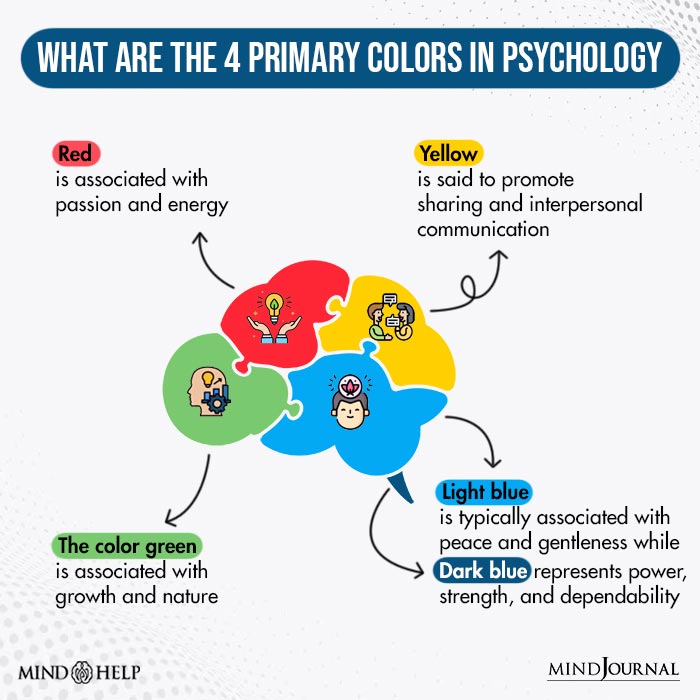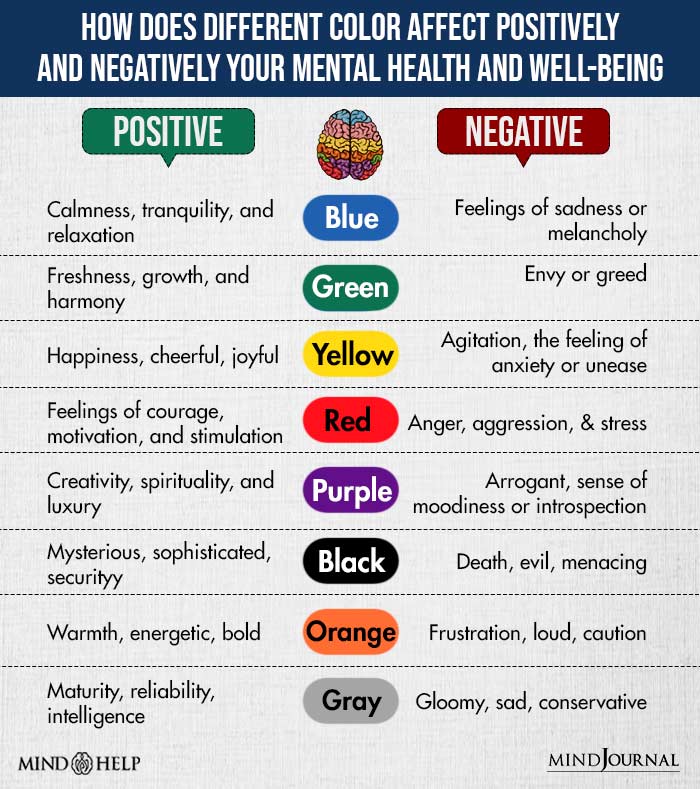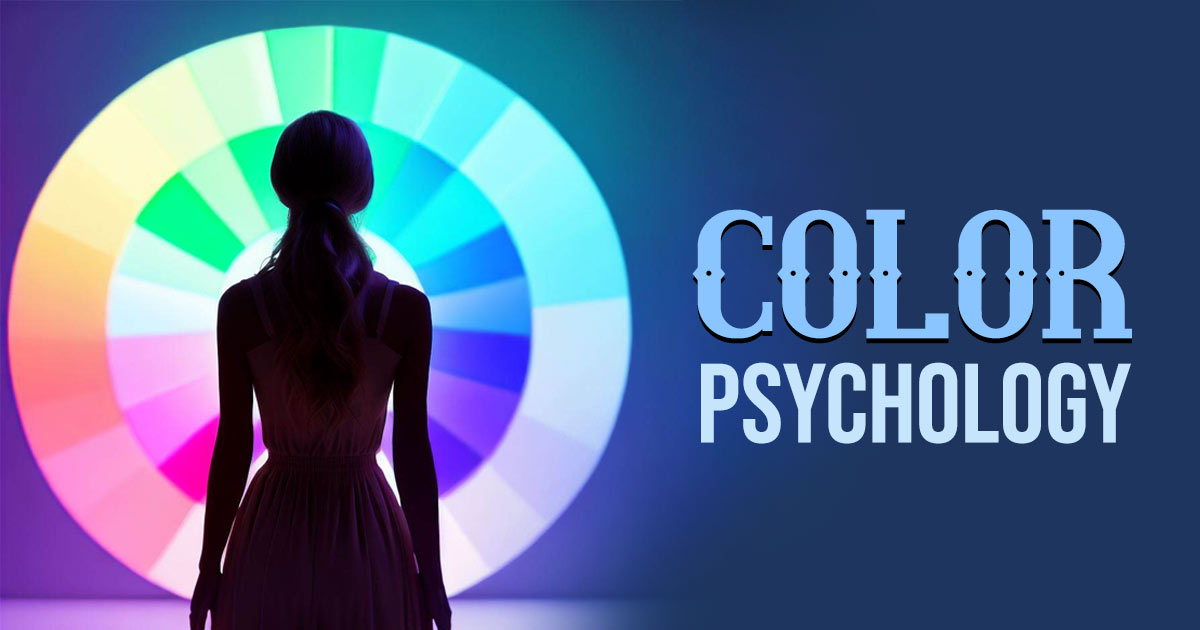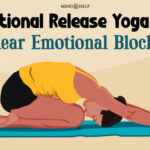Color psychology studies how colors can affect human emotions, behavior, and perceptions, ultimately influencing mood and mental health functioning. It explores the psychological and physiological responses that individuals have toward different colors.
What is Color Psychology?
Color psychology is a field 1 Whitfield, T. W., & Wiltshire, T. J. (1990). Color psychology: a critical review. Genetic, social, and general psychology monographs, 116(4), 385–411. that explores the psychological effects of color on human behavior, thoughts, and feelings, as well as how people respond to different color stimuli in the environment.
It is based on the idea that colors can have a significant impact on our perception of the world and the way we interact with it. For example, red is often associated with passion, excitement, and energy, while blue is often associated with calmness, serenity, and trustworthiness.
Color psychology plays a significant role in various fields such as marketing, design, branding, and therapy. It is estimated that 62% to 90% 2 Color Psychology in Marketing. (n.d.). ResearchGate. Available from: https://www.researchgate.net/publication/336240833_Color_Psychology_in_Marketing of initial impressions are based on colors, and women tend 3 Davis, J. T. M., Robertson, E., Lew-Levy, S., Neldner, K., Kapitany, R., Nielsen, M., & Hines, M. (2021). Cultural Components of Sex Differences in Color Preference. Child development, 92(4), 1574–1589. https://doi.org/10.1111/cdev.13528 to have a higher sensitivity to subtle color gradations compared to men.
In marketing, colors are strategically employed to evoke emotional responses and convey brand messages, while color therapy can aid in emotional regulation and enhance mental well-being.

Read More About Positive Psychology Here
Mental Health Effects of Color Psychology
The psychological effects of color on mental health 4 Elliot A. J. (2015). Color and psychological functioning: a review of theoretical and empirical work. Frontiers in psychology, 6, 368. https://doi.org/10.3389/fpsyg.2015.00368 and overall well-being include:
1. Memory
When surrounded by red color 5 Dzulkifli, M. A., & Mustafar, M. F. (2013). The influence of colour on memory performance: a review. The Malaysian journal of medical sciences : MJMS, 20(2), 3–9. , individuals are more likely to recall negative words. Conversely, green tends to enhance the retention of positive comments. This phenomenon can contribute to cultivating a happier perspective on life and fostering a healthier state of mind.
Read More About Memory Here
2. Relationship
Selecting wall colors 6 Jue, J., & Ha, J. H. (2022). Exploring the relationships between personality and color preferences. Frontiers in psychology, 13, 1065372. https://doi.org/10.3389/fpsyg.2022.1065372 such as pink, green, or white in the home can assist in attuning to positive emotions. These colors have the potential to enhance our perception of joyful facial expressions, making it easier to pick up on others’ happiness.
Read More About Relationships Here
3. Circadian Cycle
The researchers have found that intense blue light 7 Wahl, S., Engelhardt, M., Schaupp, P., Lappe, C., & Ivanov, I. V. (2019). The inner clock-Blue light sets the human rhythm. Journal of biophotonics, 12(12), e201900102. https://doi.org/10.1002/jbio.201900102 has the capacity to restore an individual’s circadian rhythm or sleep-wake cycle when it becomes disrupted.
4. Energy Level
Individuals often experience increased happiness and reduced fatigue following physical exercise 8 Azeemi, S. T., & Raza, S. M. (2005). A critical analysis of chromotherapy and its scientific evolution. Evidence-based complementary and alternative medicine : eCAM, 2(4), 481–488. https://doi.org/10.1093/ecam/neh137 in environments surrounded by the color green. Consequently, it is logical that individuals who engage in outdoor exercise, where greenery is abundant, report feeling better.
5. Migraine Relief
Individuals who experience migraines 9 Martin, L. F., Patwardhan, A. M., Jain, S. V., Salloum, M. M., Freeman, J., Khanna, R., Gannala, P., Goel, V., Jones-MacFarland, F. N., Killgore, W. D., Porreca, F., & Ibrahim, M. M. (2021). Evaluation of green light exposure on headache frequency and quality of life in migraine patients: A preliminary one-way cross-over clinical trial. Cephalalgia : an international journal of headache, 41(2), 135–147. https://doi.org/10.1177/0333102420956711 often exhibit a preference for avoiding light. Various colors, such as blue, amber, and red, tend to exacerbate migraines. However, an exception to this pattern is the color green, which appears to have a beneficial effect and may provide relief for migraine sufferers.
How Color Affects Mood and Emotions
Here’s a general overview 10 Jonauskaite, D., Parraga, C. A., Quiblier, M., & Mohr, C. (2020). Feeling Blue or Seeing Red? Similar Patterns of Emotion Associations With Colour Patches and Colour Terms. i-Perception, 11(1), 2041669520902484. https://doi.org/10.1177/2041669520902484 of the effects of color on human behavior:
1. Happy Colors—Yellow, Orange, Pink, Red, Peach, Light Pink, and Lilac
These colors are commonly linked to emotions of happiness and optimism, evoking a positive and uplifting atmosphere. When combined, multiple colors can create a vibrant and lively environment. However, it’s important to note that excessive use of colors in conjunction can sometimes result in a feeling of chaos and overwhelm.
2. Sad Colors—Gray, Brown, Beige, and Dark Blue
These colors are typically characterized by their darkness, muteness, and neutrality. In Western cultures, black is commonly associated with mourning, while in some East Asian countries, white is symbolic of grief and mourning.
3. Calming Colors—Blue, Green, Baby Blue, Lilac, Mint, White, and Gray
When seeking a relaxing atmosphere, these cool colors and cool-toned pastels are ideal choices. Additionally, neutral tones like white and gray contribute to a sense of tranquility.
4. Energizing Colors—Bright Red, Yellow, Neon Green, Turquoise, Magenta, and Emerald Green
These colors are highly intense, which can energize emotions. Their bold and eye-catching nature makes them stand out from their surroundings, creating a vibrant and energetic impact on people.

Factors that Affect Colors and Mental Health
Perception of color and mental health can be influenced by various factors 11 Emery, K. J., & Webster, M. A. (2019). Individual differences and their implications for color perception. Current opinion in behavioral sciences, 30, 28–33. https://doi.org/10.1016/j.cobeha.2019.05.002 , including:
- The lighting conditions, such as the color of light, and natural daylight plays a significant role in how an individual perceives colors.
- As people age, their eye muscles weaken, which can impact the ability to perceive color contrasts.
- The background against which an object is viewed can affect the perception of its color.
- Each person may have individual color preferences based on their unique experiences, cultural background, and personal associations.
- Visual arts and design can impact mental health functioning through the use of colors.
How Color Therapy Benefits Mental Health
Color therapy is believed to offer the following potential benefits 12 Azeemi, S. T. Y., Rafiq, H. M., Ismail, I., Kazmi, S. R., & Azeemi, A. (2019). The mechanistic basis of chromotherapy: Current knowledge and future perspectives. Complementary therapies in medicine, 46, 217–222. https://doi.org/10.1016/j.ctim.2019.08.025 to mental health functioning:
- Strategically incorporating colors can help to stimulate and uplift mood, promoting feelings of energy, happiness, and positivity.
- It can help reduce stress by engaging with soothing colors like blue or lavender are thought to have a calming effect on the nervous system.
- By exposing individuals to particular colors, therapists aim to address imbalances in emotional states and promote a sense of harmony and well-being.
- By exploring personal reactions and associations with different colors, individuals can gain insights into their inner states.
- Color therapy often involves creative activities for self-expression, such as painting, drawing, or visualizing colors.
Color Psychology in Marketing
From the clothes people wear to the cars they drive, color choices 13 Kim, H., & Jang, J. M. (2022). Disadvantages of red: The color congruence effect in comparative price advertising. Frontiers in psychology, 13, 1019163. https://doi.org/10.3389/fpsyg.2022.1019163 can communicate messages about how they wish to be perceived by others, such as:
- Many people associate white with a sense of freshness and cleanliness, symbolizing youthfulness and modernity.
- Black often explains its popularity among luxury vehicles. It is often seen as alluring, powerful, and mysterious.
- A preference for red may indicate a desire to project an image of power, action, and confidence.
- Blue is often seen as a color of stability and safety.
- Experts suggest that yellow may 14 Takei, A., & Imaizumi, S. (2022). Effects of color-emotion association on facial expression judgments. Heliyon, 8(1), e08804. https://doi.org/10.1016/j.heliyon.2022.e08804 indicate an overall happy disposition and a willingness to take more risks than the average person.
How To Apply Color Psychology In Everyday Life?
Different ways to correlate the psychological effects of color and mental health 15 Elliot, A. J., & Maier, M. A. (2014). Color psychology: effects of perceiving color on psychological functioning in humans. Annual review of psychology, 65, 95–120. https://doi.org/10.1146/annurev-psych-010213-115035 functioning in everyday life, such as:
- Use calming colors like blues or greens in bedrooms or relaxation areas, and energizing colors like yellows or oranges in workspaces or areas for socializing.
- Select clothing colors that reflect your desired mood, like wearing calming blues when seeking relaxation, or choose vibrant colors like reds or yellows to boost energy.
- Incorporate images or artwork with specific colors that evoke desired emotions or states of mind.
- Incorporate a variety of colorful fruits and vegetables into your diet which represents a range of nutrients as well as can promote overall well-being.
- Engage in activities like hiking, gardening, or picnics, and try to incorporate the vibrant colors from the natural environment in your daily life.
- Infuse color into your self-care routines, such as colored candles or bath products to enhance relaxation and promote positive emotions.
Takeaway
Colors have the power to influence human emotions, perceptions, and behaviors. By strategically using color psychology in marketing, design, and various contexts, one can evoke specific psychological responses and create desired effects on individuals. However, the impact of colors can vary among individuals and cultures, so it’s important to consider context and personal preferences when applying color psychology.
At A Glance
- Color psychology studies how colors can affect human emotions, behavior, and perceptions.
- Color psychology can have a significant impact on memory, sleep, and relationships with others.
- Perception of colors can be influenced by various factors, including age, lightning condition, background, etc.
- Color therapy is believed to offer mental health functioning such as mood enhancement, stress reduction, etc.
- Colors can influence consumer perceptions, emotions, and behaviors in marketing.
- Colors can be applied in everyday life, such as selecting rooms, workplaces, and clothing colors that reflect one’s desired mood.
Frequently Asked Questions (FAQs)
1. How does color psychology affect consumer behavior?
Color psychology plays a significant role in marketing and consumer behavior. By strategically using colors in branding, packaging, and advertising, businesses can influence consumer perceptions, create desired emotional responses, and even influence purchasing decisions.
2. Can color choices impact productivity or performance?
Yes, color choices in work or study environments can influence productivity and performance. For instance, blue and green are believed to enhance focus and concentration, while red may stimulate attention to detail or boost physical performance.
3. Are there cultural differences in color symbolism?
Colors can hold different meanings and associations based on cultural traditions, religious beliefs, and historical contexts. For example, white is associated with purity and weddings in Western cultures, while it represents mourning in some Eastern cultures.















